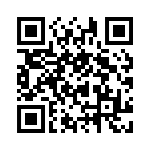1 Helping Traumatised Children Learn with Dr. Dave Ziegler
Dr. Dave Ziegler
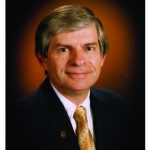
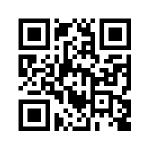 Dr. Dave Ziegler is a psychologist and founder and director of Jasper Mountain, a world-renowned healing facility for children aged three to 12. Located on more than 90 acres of beautiful forest, Jasper Mountain hosts a residential treatment facility, an integrated school, an assessment and crisis centre, and a foster care programme. Jasper Mountain has consistently achieved remarkable outcomes for some of the USA’s most severely traumatised children for over 30 years. Dr. Ziegler is the author of several books, including Raising children who refuse to be raised, Achieving success with impossible children, Traumatic experience in the brain, and Beyond healing: A neurological reparative therapy.
Dr. Dave Ziegler is a psychologist and founder and director of Jasper Mountain, a world-renowned healing facility for children aged three to 12. Located on more than 90 acres of beautiful forest, Jasper Mountain hosts a residential treatment facility, an integrated school, an assessment and crisis centre, and a foster care programme. Jasper Mountain has consistently achieved remarkable outcomes for some of the USA’s most severely traumatised children for over 30 years. Dr. Ziegler is the author of several books, including Raising children who refuse to be raised, Achieving success with impossible children, Traumatic experience in the brain, and Beyond healing: A neurological reparative therapy.
Click or scan the QR code to learn more about Dr. Ziegler’s work.
Dr. Ziegler: I began my career as a family therapist in Arizona, down in the desert, a long way from the forest in Oregon. While family therapy brought much value to many families, there was a group of children we couldn’t reach. They had serious issues that went beyond what we could do in a outpatient, community clinic. Meeting once or even twice a week was not enough. Some colleagues and I decided to set up a centre that would be a place of healing and learning for these children. To see if there was a way that we could get to the most severe kids and help them. We didn’t want these kids to become society’s casualties through criminal justice or drug and alcohol issues. So in the last thirty-five years, I have worked with the most severe kids at our centre in Jasper Mountain.
Challenges for Traumatised Children at School
Dr. Ayre: In your paper, ‘Optimum learning environments for traumatized children’, you write about some reasons why traumatised children don’t do well at school. What are the biggest challenges for these students to succeed at school?
Dr. Ziegler: I never want to understate how difficult it is for a teacher with a classroom of these young children who all learn differently I never want to understate how difficult it is for a teacher with a classroom of these young children who all learn differently.. The children come from different backgrounds, and trying to get them to move to the next step on the academic ladder is difficult. Even more challenging is when some kids in the classroom have a trauma history. Trauma gets in the way of learning as it changes the brain and how children process information. It changes the ability of children to be vulnerable, an essential aspect of learning. It teaches children that they can’t trust some adults, or maybe they can’t trust any adults. There is a close connection between learning disabilities and complex trauma as they often come together, impacting learning.
Trauma activates the fight or flight response. When symbols or recollections of trauma come up in the academic setting or classroom, children will either fight or act out, or they will flee, which is sometimes to go into their own space. Many teachers consider these children to be daydreamers or, what we call in psychology, dissociators. It’s simply the way that the brain is handling reminders that come up in the classroom or triggers that are related to their trauma.
Our schools are not designed to help children with significant trauma learn because you have to approach how you teach them differently. If we do not reach these children through education, they continue with their learning disability, and they perceive education as not particularly useful. Their brains are designed for survival, and they are focused on survival. Learning about language, arts, history, and math – it is a stretch to have a traumatised child feel like that information is important to them. They’re concerned about how they can be safe tonight from their alcoholic parent. How can I keep Uncle Charlie from coming into my room and sexually abusing me this weekend? Those are the critical things to traumatised kids.
The traumatised brain does not want to be vulnerable. It does not want to be hurt again, yet you cannot learn without vulnerability. You cannot learn without making mistakes, which is a difficult challenge for kids with trauma.
![]() Optimum Learning Environments for Traumatised Children
Optimum Learning Environments for Traumatised Children
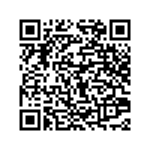 In Dr. Ziegler’s article, he writes about how trauma and learning in school do not mix well together. This is not to say that trauma does not result in significant learning for the child. The child learns not to trust, learns to be anxious around adults, and learns to be vigilant of the motivations of others. What a child learns from trauma negatively impacts learning in an academic setting. If the goal is for a child to come into an academic setting ready to learn, ready to emotionally experience the enjoyment and excitement of discovery, then the effects of traumatic experience will hinder learning in a variety of ways.
In Dr. Ziegler’s article, he writes about how trauma and learning in school do not mix well together. This is not to say that trauma does not result in significant learning for the child. The child learns not to trust, learns to be anxious around adults, and learns to be vigilant of the motivations of others. What a child learns from trauma negatively impacts learning in an academic setting. If the goal is for a child to come into an academic setting ready to learn, ready to emotionally experience the enjoyment and excitement of discovery, then the effects of traumatic experience will hinder learning in a variety of ways.
Click or scan the QR code read about read the rest of the article [PDF].
Trauma Informed Education
Dr. Ayre: What is your education model at Jasper Mountain, and how has it been designed to be trauma-informed?
Dr. Ziegler: You have to teach these kids differently. If you want to reach them, these are some of the factors we have found to be very helpful at Jasper Mountain.
First of all, the educational process is very active rather than passive. Many times in classroom settings, the children are given a desk, they sit at their desks, they’re told to be silent, to raise their hand, and they’re told to do their work. We do the opposite. We have a very active process where the children are physically up and about and active in the classroom. They go to learning centres throughout the room. Every half an hour or so, we stop the process, and we might put on some music, do some dancing, get very active and then stop and go back to the learning process. It’s a dynamic thing that most children are very used to doing.
We try to remove negative stress in the classroom. Too often in our schools, we have a competitive setup where we might say, “let’s see who can do the best job on this maths test or spelling test”. This produces stress for all children, but sometimes for some children, it’s positive stress, which can be a significant motivator for learning. Negative stress isn’t a motivator for learning, so we try to eliminate any negative stress. Negative stress will produce a fight or flight response for kids that have trauma.
We want an expressive environment where we want kids to express their opinions.We want an expressive environment where we want kids to express their opinions. We want them to draw things, to write, and to sing. The environment has to be fun. In my learning many years ago, the goal was not to make learning a fun process. I believe that not only do children learn more when they’re having fun, I think adults learn more when they’re having fun.
We also need to be very careful about the adult-mediated activity. It doesn’t take very long for a child to take a risk and try to give an answer or try to do something they’re not very good at, and if they’re made fun of, that immediately stops. We need adults to be right there, onsite, and help this to be a positive process. We don’t want children taking advantage of other children and making them feel bad.
The situation must be predictable, so we have our schedules on the board, and the kids know what’s coming next. We try to give them a five-minute warning when there’s a transition. Kids with trauma do a lot better when they can predict that here comes a change to maths, or we’re going to go to lunch next, or we’re going to go out for recess.

Kids also need to have more successes than failures. Too often, when you don’t know something, you will make lots of mistakes learning. We have to build in elements that kids will be successful in some ways because none of us will continue to do something we continue to fail at. The classroom also needs to be based on relationships. It has to be between the individual and the teachers. What we do in our classrooms is we have no more than ten children. They’re all traumatised kids, but ten children in a classroom with three teachers. One of the teachers is a certified special education teacher with a master’s degree. The other two teachers are teachers’ aides, or what we call their direct care staff. There are also staff who are part of treatment teams trained in mental health. We have both mental health and academics in the classroom simultaneously.We have both mental health and academics in the classroom simultaneously.
Now, in regards to competition. Competition can motivate kids to learn, but it can also stop the process cold. What traumatised kids need is what I call ‘even competition’. Even competition means there is a winner, and there can be a loser which can teach us about life, but every child has an equal chance of winning. The fastest child will win if we go out and have a race. If we have a test on maths, the child that’s the smartest will win. You have to change that competitive process so all children have a chance of winning, or we have found they will simply not compete. We put much more emphasis on cooperation rather than competition. We want children to learn together, and we want them to teach each other. We want some of the children who are a little bit older, who may be more skilled, to help some of the younger children. One of the best ways to learn something is to teach someone else. These are some of the different approaches to education or learning that we use to really change the environment in the classroom so that it’s conducive for traumatised children to learn.
![]() Once Upon a Mountain: Documentary on Jasper Mountain [3:00 mins]
Once Upon a Mountain: Documentary on Jasper Mountain [3:00 mins]
To learn more about the Jasper Mountain facility and Dr. Ziegler’s work, check out the documentary, ‘Once Upon a Mountain’. Melbourne based film-makers follow Dr. Ziegler, the facility staff and youth as they engage in the educational programs at the facility.
Click or scan the QR code to watch the trailer or rent the documentary.
Dr. Ayre: How do you manage teaching different age groups? Are children grouped according to traditional grade levels?
Dr. Ziegler: Years ago, when we started our school in 1989, I wanted to return to the one-room schoolhouse where everybody learned together. We managed to do that for several years, but when our numbers started getting up to 80 children, we couldn’t teach that number of children in one room anymore. The modern school is like the way Henry Ford built motor cars. We’re assembly lines. We think in first grade, we’re going to teach them this. In second grade, we’re going to put the tyres on. In third grade, we’ll put the muffler on, and in fourth grade, we’ll have the engine. It makes much more sense to have older children learn with younger children. Younger children then see the modelling from the older children, and we don’t have these ‘age ghettos’, where all children are the same, working through the years of schooling. What we do, is we combine children by abilities rather than age. So, you could have a much younger child with an older child if their ability in reading or maths or language arts were similar. We combine the children by ability groups rather than simply ages.
Unschooling the Educational Environment
Dr. Ayre: You write about the need to ‘unschool’ educational environments to avoid triggering memories of school failure. What do you mean by this?
Dr. Ziegler: When I say we need to unschool educational environments, we need something vastly different than a traditional school for traumatised children.When I say we need to unschool educational environments, we need something vastly different than a traditional school for traumatised children. Children who have experienced trauma perceive school as the place they go where they look stupid. They feel stupid, and they perceive teachers are there to point out all their mistakes and make them feel worse. That doesn’t have anything to do with what good teachers are doing in the classroom.
We need to give these kids a new perception of what happens in school. That school is a resource where you will learn what you need to succeed in life, and a teacher is somebody who is a resource person to meet your goals. When I talk about the unschool, I’m saying that school needs to look different, it needs to feel different, and it needs to be different. The education process needs to fit the child rather than the child fitting into the educational process.
All children learn a little bit differently. We need to spend the time to find out how individual children learn and then build a fun, exciting, active process around them so that they can be successful. Our ultimate goal is to instil a genuine love of lifelong learning, and we don’t just want children to get up to their grade level or succeed in their testing. We want them to be excited about learning. There is nothing that should be easier than getting a child to get excited about learning. Yet, somehow in our educational process, we have turned off a lot of children. Learning is not as much fun, and it’s not exciting anymore.
Dr. Ayre: I would suggest many teachers would feel the same way.
Dr. Ziegler: Yes. If we do not have excited, happy teachers, we don’t have excited, happy students.

Challenges for Educators
Dr. Ayre: What challenges do the educators face at Jasper Mountain when working with students in a trauma-informed way?
Dr. Ziegler: We set our vision and goals pretty high. We have 80 children in our school, and every day they come in from about twenty-four different school districts from around the United States. They almost always are the most challenging child in their school district. If you have a school district of fifteen thousand children and you have the most challenging child, try to imagine that same child with 79 peers who are the most challenging child in their school. So right off the bat, there are some real challenges which is why we have a high adult-to-child ratio. This helps the teachers to be able to not only handle the behaviour but also to give individualised attention to children, that’s important.
I’ve mentioned children all learn differently. Even if you have ten kids in your classroom, it’s pretty challenging to figure out how these ten kids are going to best learn. To figure that out in a way that fits into a structure, within the day, and where we want to go as a group is tricky for teachers. You want an active educational process and an active environment, but you don’t want chaos. There’s a balance between children being up and moving around and doing things and dancing, listening to music and then stopping and doing some math facts, etcetera. Chaos will work against the traumatised brain and make it even more difficult to engage and learn.
Our teachers struggle with the fact that education is secondary to the children’s healing at Jasper Mountain. Teachers are not used to hearing that. They’re used to believing the most important thing in their classroom is the educational activity. With our children, they have to understand that sometimes it takes them six months, sometimes the whole school year, to prepare these children to learn and grow. We must start with where they are, which is often needing to heal the wounds that have been produced by trauma in other settings, including in other school settings. Almost all of our children have failed universally. They’ve failed in school, at home, and then in our environment, they succeed, sometimes for the first time.
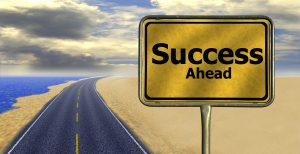
The other challenge is to transition them back into public school settings where they may encounter the same factors that produced the failure, to begin with. How we transition them back from this very conducive environment into a much less responsive, fun, and exciting environment is all important. Fortunately, if done right, we can make that transition and have them get up to speed, return to a public school, and succeed, but only once they’re healed in our environment.
Dr. Ayre: So, the experiences and skills they take with them holds them in good stead when they’re back in those very different environments?
Dr. Ziegler: Yes, it does, although one of the most important things that has to happen is that we need to change the child’s perceptions about school. They’re used to walking into school and believing that the teacher wants them to fail. Why else would they circle all their mistakes in red? Why would they give them bad grades if they didn’t want the child to fail? Children misperceive, so we need to have them develop a new perception of school as something fun and interesting. As a place where you can learn about things you can use, and you have guides and resources called teachers that want to help you learn the things that you want to learn. With children transitioning back to regular school, we have found that if we’ve been able to alter those perceptions, the children make even more academic progress after leaving us than when they were with us. That tells me that the children plug back in with their peers in public education. They’re excited about catching up and learning; having had some success, they’re ready to have more success.
Dr. Ayre: Is there a time limit for the children who come to your programmes to transition back to public education?
Dr. Ziegler: We have six different programmes. I’ll talk about the most intensive programme, which is our long-term residential programme. Children stay in that programme for an average of 14 months. We have found that with younger children, we can often get to a place of healing and growth quicker than with some of the older children. We don’t have children in our setting longer than needed.
We use a variety of scales and standardised tests to assist with knowing when they’re ready to transition out. When children can cope and engage themselves in families, in public school, and the community, that’s when we know they’re ready to transition. We want them to be able to do all those things successfully before they leave us. While they can’t do that, we’re working in our very intensive structured programme. We have the advantage that when children are in our residential programme, they go to our onsite school. We can also have children move on from the residential programme and continue in our onsite school, so we don’t try to have all the transitions happen simultaneously. We have about half and half in our onsite school. Half the children attend from our residential programme and about half attend as a day student only. The length of time children are in our school varies. However, we generally like to have an entire school year to work on the misperceptions of school, build some successes, get the children excited about learning, and see that school can be a lot of fun.
Dr. Ayre: How do you bridge that gap for a traumatised child to return to Public Education successfully where the learning process looks and feels very different than it does at Jasper Mountain?
Dr. Ziegler: We build a relationship with the school and the teacher to whom the child will transition. We will meet with the school and the teacher and say we have a unique challenge for you. Teachers don’t necessarily like a problem, but they do like a challenge. Teachers are receptive when I tell them, “I will help you succeed, you can rely on my team, and if you have a problem, you can call us, and we will assist you”. Teachers can also see how this child has progressed in our setting and how things can improve. There’s nothing quite like a teacher that takes on a challenging child and succeeds. We begin by transitioning the child back into the classroom one period and one hour at a time so that they have a foot in both worlds. Jasper Mountain teachers will go to the child’s public school classroom, and we will continue to provide psychological help. We continue to be a backup during a crisis and build a team with the public school and the teacher. If we can do that and connect to them, the teachers generally say, “yes, we will do our best”. If we all work together, we can begin to help both the child and the teacher see some successes.
![]() Transition Toolkit
Transition Toolkit

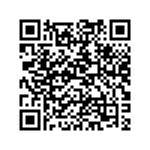 We know routines and planning are key to always supporting students. This is especially true at times of change and transition. Here we provide a range of suggestions and ideas. Some will be specifically relevant to a primary or high school transition; others will be universal and relevant to any transition point for any students. Some ideas will be dependent on your child and their learning and development.
We know routines and planning are key to always supporting students. This is especially true at times of change and transition. Here we provide a range of suggestions and ideas. Some will be specifically relevant to a primary or high school transition; others will be universal and relevant to any transition point for any students. Some ideas will be dependent on your child and their learning and development.
Click or scan the QR code to access resources to support transitions for students from the ACT Department of Education.
Dr. Ayre: When you see that success, that’s the reason you do what you do. You only need to see one little glimmer of a step through the doorway today with a smile and it makes it all worthwhile.
Dr. Ziegler: That’s why we’re all in this business of helping children. To see learning happening in front of us and a future that can make a difference to children.
Recently, I had a visit from a young man that I hadn’t seen in 18 years. Unannounced. He came to my office and said, “I just want to thank you”. He was one of the most traumatised children I have ever worked with. He said everything changed when he was here, and when he thinks of his childhood, he thinks of me and this place. He said, “You are my family, and I want you to know that I am a successful and happy adult”. That’s why we’re in this business! The importance of having fun, having success and being able to expect and predict what’s coming next are elements vital to teaching traumatised children.
Something not yet mentioned is the importance of disconfirmation. What I mean by disconfirmation is that we need to disconfirm not only the perceptions of the child about school, but their perceptions about themselves. We need to disconfirm their belief that they are not a good learner, are not successful, and are not a likeable child. Unfortunately, when we don’t disconfirm, many adults will do important things like hold kids accountable and have consequences for their behaviour. Through this, we confirm the child’s negative view of themselves. We will then never turn that child into a good learner. So the process of disconfirming is crucially important.

We also don’t see enough integration between academic and psychological support. Everywhere I go, I plead with people, have your educational people and have your psychologist, and your mental health people work together for children. What we do in our setting is, in real-time, integrate our treatment and our academics in one place. We bring it to the child rather than send them to a clinic and a school and give them unintegrated bits and pieces. The adults need to be working together to help these very traumatised children.
At Jasper Mountain, we focus not only on our treatment but also on the whole child. We want to touch their mind, their body and their spirit. We do a lot of physical things, and we do a lot of things in terms of their minds and their healing, their trauma and their psychological treatment. We also address their spirit. We want children to feel a connection, the universal sense that we belong to something greater than ourselvesWe want children to feel a connection, the universal sense that we belong to something greater than ourselves. That could be belonging to a team, belonging to a family, or a classroom. We want our academic programme to touch the mind, body and spirit. Sometimes, for children to learn, we must prepare them and get them ready to learn. You always have to start with where the child is.
Although you have a curriculum that says this is step one, two and three, we’re all going to move down this road together. But here is Susan or Charles in the classroom, not ready to learn because they are still fearful of the adults around them, of what’s happening next, or of being vulnerable. We need to start and prepare the child to learn, and sometimes that may take some time before they’re ready to take that first step academically. My experience has been that if we meet the needs of a particular child, we usually can’t hold them back from learning. Sometimes we think we need to prod and push kids into learning, yet if we only understand that if we can get on the same page and understand where the child is coming from, they’ll get excited about learning, so stand back because they’re going to take off and they’re going to learn whatever they can.
This young man that came into my office recently is a mechanic on a world-class aeroplane, and he has to know all the various manuals. He had to go to school for years, and this young man was standing there saying to me, “I learnt here how to learn, and now I am in a position where I make a real difference and teach others the skills I have”. You could see the pride on his face. He came to us at age four and said he was likely never to do well in school, and now this young man is an expert on one of the most sophisticated aeroplanes in the world. I think that’s why we have found that even after they leave our academic and treatment environment, the children grow exponentially in the first few months rather than deteriorate.
Staff Wellbeing
Dr. Ayre: Given the nature and complexity of the children you teach and the effect that can have on staff, how do you look after your team and their wellbeing?
Dr. Ziegler: We’re the only non-profit, non-government organisation that I’m aware of that has a mission statement that says, “we are committed to the development of mind, body and spirit of our staff”. The first thing we know about job satisfaction is that whatever we do works, and we feel like we’re making a difference. I want you to consider, if you worked for me in one of my classrooms and you saw children coming in after having failed everywhere they had been in school, and now they’re succeeding for the first time, how would you feel going home at night?
Dr. Ayre: I’d feel absolutely delighted.
Dr. Ziegler: Once a year, we ask all the staff in detail how they feel about their job. Universally, what they say back in terms of the things that are most important about working at Jasper Mountain, and I have people that have worked here for two and three decades and can’t wait to come to work the next day, they universally say that making a difference in the lives of these kids, makes all the difference to them in terms of their own energy. Despite how hard it is and how much you have to give when you see that there is success, there’s nothing like that to give you more energy and say, “well, I’m going to do it some more”.
We provide our staff with excellent supervision, and research now indicates that your relationship with your supervisor and the support you get is all-important, as is the support you have with your peers. The second most important thing our staff say about working for us is that they work for a team of very committed individuals who want to make a difference. “let’s get back at it and let’s change some more lives” They don’t want to let down the team. They want to do their part. One of the questions we ask all of our 135 staff is, “what are your plans for the future?” and 80 percent say they want to spend their entire careers at Jasper Mountain. I don’t know how to respond to that. I’m so impressed that people would like to stick around and work and make a difference and be a part of this team. Along with working and living in one of the healthiest and most beautiful places in the US, those things all contribute to making a team of people that go home at night tired, maybe in tears, but they sleep well, then get up in the morning and say, “let’s get back at it and let’s change some more lives”.
![]() Caring for the Educator
Caring for the Educator
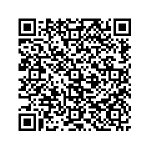 We are all, at all times, both vulnerable and resilient. Educators and educational systems have an ethical duty to build resilience and reduce vulnerability in themselves and their colleagues as secondary traumatic stress is a health and safety issue. Click or scan the QR code to learn more about self-care and wellbeing in our book Trauma informed behaviour support.
We are all, at all times, both vulnerable and resilient. Educators and educational systems have an ethical duty to build resilience and reduce vulnerability in themselves and their colleagues as secondary traumatic stress is a health and safety issue. Click or scan the QR code to learn more about self-care and wellbeing in our book Trauma informed behaviour support.
Chapter Summary
- Trauma gets in the way of learning by changing the brain structure of children and how information is processed.
- Minimising sources of negative stress is vital in the classroom and may lessen the likelihood the stress response system of the child with trauma will be activated.
- Unschooling the educational environment for children with trauma is essential. School needs to look, feel and be different to traditional schools where these children have failed.
- Changing the child’s perception about school is important for the child to succeed when it comes time to transition back to a mainstream school.
- Teachers need ongoing coaching and support to learn they can teach a child with trauma successfully. It is important to have fun, success and be able to predict what’s coming next. These are vital elements for teaching traumatised children.
![]() Listen to the full interview on the Trauma Informed Education Podcast
Listen to the full interview on the Trauma Informed Education Podcast
References
ACT Government. (n.d.). Education: Transition toolkit. https://www.education.act.gov.au/support-for-our-students/students-with-disability/transition-toolkit
Ayre, K. (Host). (2016, December 3). Helping traumatized children learn with Dr. Dave Ziegler (Episode 2) [Audio podcast episode]. In Trauma Informed Education. Sound cloud. https://soundcloud.com/trauma-informed-education/tipbs-podcast-dr-dave-ziegler-part-1-of-2?in=trauma-informed-education/sets/expert-interviews&si=072698165a6d49c0a46723064c43875c&utm_source=clipboard&utm_medium=text&utm_campaign=social_sharing
Ayre, K., & Krishnamoorthy, G. (2020). Trauma informed behaviour support: A practical guide to developing resilient learners. University of Southern Queensland. https://usq.pressbooks.pub/traumainformedpractice/
Blueprint Studios. (2021, May 28). Once Upon a Mountain [Film]. Vimeo. https://vimeo.com/ondemand/ouam
Jasper Mountain Agency. (n.d.). Jasper Mountain: Hope for children & families. https://jaspermountain.org/
Ziegler, D. (2013). Optimum learning environments for traumatized children: How abused children learn best in school. http://www.jaspermountain.org/optimum_learning_environment.pdf

